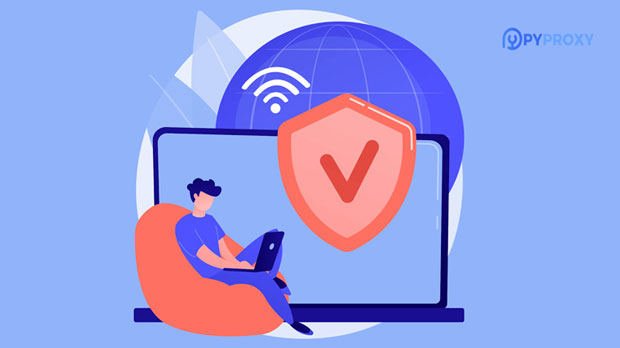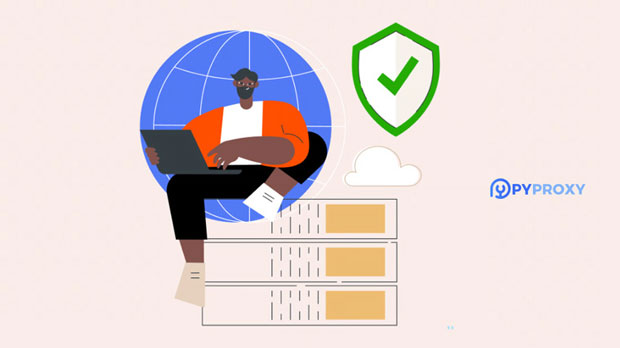When it comes to proxy websites, ensuring secure access and data protection is paramount. Proxy servers often act as intermediaries between users and the resources they seek to access, which means they require proper authentication methods to maintain security and reliability. Two of the most common authentication methods used by proxy websites are username and password authentication, and token-based authentication. Both methods offer distinct advantages and challenges, making it essential for businesses and users to understand their implications. This article will delve into the differences, benefits, and use cases of username-password authentication versus token-based authentication to help you make informed decisions about the most appropriate authentication strategy for your needs. Understanding Proxy AuthenticationBefore diving into the specific methods, it is important to first understand the role of authentication in proxy websites. Authentication is the process of verifying the identity of a user or system, ensuring that only authorized individuals have access to the proxy service. This process is critical for maintaining the integrity and security of the data transmitted through the proxy, as well as protecting the underlying resources the proxy is connected to. Proxy authentication serves as the gatekeeper, determining whether the request should proceed or be blocked.Authentication methods for proxy websites can vary in complexity and security. Let’s explore two popular forms of authentication: username-password authentication and token-based authentication.Username and Password AuthenticationWhat is Username and Password Authentication?Username and password authentication is the traditional and most widely used method for accessing proxy websites. Users are required to input their unique username and corresponding password to gain access to the proxy server. This method is simple to implement and commonly used in a variety of environments, from personal browsing to business networks.Advantages of Username and Password Authentication1. Simplicity and Familiarity: Users are accustomed to this method, making it easy to understand and deploy. Setting up a username-password system doesn’t require sophisticated technology or additional infrastructure.2. Cost-effective: In terms of implementation and maintenance, username and password systems are less expensive compared to more advanced authentication methods like token-based solutions.3. Wide Compatibility: Username-password authentication is compatible with virtually all proxy servers and applications. It is also supported by most devices and platforms.Challenges of Username and Password Authentication1. Security Risks: One of the major concerns with username-password authentication is the potential for security breaches. If the username and password are weak or if they are compromised (e.g., via phishing or brute-force attacks), unauthorized access can be gained.2. Password Fatigue: Many users struggle with remembering complex passwords for multiple accounts, leading to poor password hygiene and the use of weak passwords.3. Limited Scalability: As a business grows, managing and updating usernames and passwords for large numbers of users can become cumbersome and prone to error.Token-Based AuthenticationWhat is Token-Based Authentication?Token-based authentication is a more modern method that uses a unique token for each user session. In this method, users receive a token upon logging in, which they then use to authenticate their session with the proxy server. The token often expires after a set period, requiring reauthentication.Advantages of Token-Based Authentication1. Enhanced Security: Unlike username-password systems, tokens are more secure because they are often time-limited and cannot be reused. Tokens are typically harder to intercept or steal than passwords, providing better protection against unauthorized access.2. Reduced Password Fatigue: Since tokens do not require users to remember long passwords, they reduce the risk of password fatigue. Users can focus on securing their sessions with a single, short-lived token instead of managing multiple, permanent passwords.3. Scalability and Flexibility: Token-based authentication can be more scalable in large environments. It allows businesses to authenticate a large number of users without the need to manage and distribute usernames and passwords individually. Additionally, tokens can be used across various systems, making them highly flexible.4. Single Sign-On (SSO): Tokens can also be used for Single Sign-On (SSO) authentication, allowing users to access multiple applications or resources with a single token, streamlining the authentication process.Challenges of Token-Based Authentication1. Implementation Complexity: Setting up token-based authentication can be more complex and require specialized tools or services. The infrastructure for generating, storing, and validating tokens may require additional resources.2. Token Management: While tokens are secure, managing them effectively can pose challenges. This includes ensuring that tokens are invalidated after they expire, securely storing tokens, and implementing proper token renewal mechanisms.3. Compatibility Issues: Some older systems or proxy servers may not support token-based authentication, requiring additional integration efforts.Comparing Username and Password vs. Token-Based AuthenticationSecurity ConsiderationsWhen comparing username-password authentication to token-based authentication, security is often the most crucial factor. Tokens generally offer better security because they are more resistant to attacks such as brute force, credential stuffing, and phishing. In contrast, passwords, especially weak ones, are vulnerable to various types of attacks. Moreover, token expiration and usage restrictions provide an additional layer of protection.Ease of UseFrom a user experience perspective, username-password authentication is simpler and more familiar. Users are used to entering their credentials on a regular basis, making this method easy to understand. However, token-based authentication offers a smoother experience in environments that support Single Sign-On (SSO), reducing the need for repeated logins.Scalability and ManagementFor large businesses or environments with many users, token-based authentication is more scalable. With username-password authentication, managing and updating credentials for large numbers of users can become difficult, whereas tokens can simplify this process.Best Use Cases for Each Authentication Method- Username and Password Authentication: This method is ideal for small-scale proxy servers, personal use, or environments where ease of use and low cost are priorities.- Token-Based Authentication: Best suited for larger organizations or systems that require enhanced security, scalability, and flexibility, especially when Single Sign-On or multi-factor authentication is necessary.ConclusionBoth username-password authentication and token-based authentication have their advantages and disadvantages. The right choice depends on the specific needs of the user or organization, taking into account factors such as security requirements, scalability, and ease of use. While username-password authentication remains popular for its simplicity, token-based authentication offers more robust security and greater flexibility for larger, more complex environments. By understanding these authentication methods, businesses can choose the approach that best fits their needs, ensuring a secure and efficient user experience.
Jul 07, 2025


































































